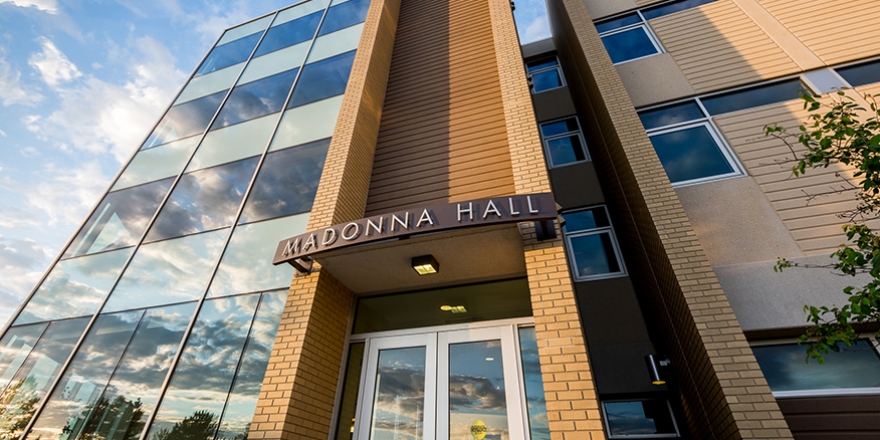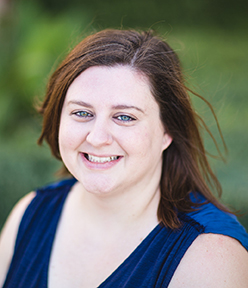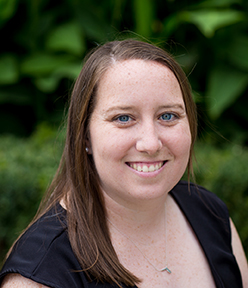
Changing populations, changing needs: Considerations for the emerging population of Student parents
By Ashley Lancaster and Christine Simone
As the landscape of students and their needs continue to take shape, populations of students with varied backgrounds and needs begin to emerge within the college setting. Per the Institute for Women’s Policy Research, just over a quarter of undergraduate students, 4.8 million individuals, in the United States identify as raising one or more dependent children and, of these, 43 percent of the total student parent population identify as single mothers (Gault, et al.). College of Saint Mary, a small, female, Catholic, liberal arts institution boasts a high percentage of students who identify as parents and has spent almost 20 years continuing to build upon experiences working with the population of students. Within Residence Life specifically, staff work with residential mothers in a Mothers Living and Learning (MLL) community to create a community that addresses parents’ needs to support their success both as parents and students.
CSM’s MLL community offers unmarried, female students seeking an undergraduate degree the opportunity to live on campus in suite-style housing with another mother as a roommate. Residence Life staff partner with the campus’ Single Parent Success office to provide resources and educational programming that targets the needs of both parents and their children, and residents enroll in a first-semester pass/fail course titled the Successful Single Parent. Over the course of working with this community, staff have experienced a number of topics to consider when working with residential parents.
Parents Working With Faculty: Parents, particularly those new or returning to the college academic environment should be encouraged to have proactive conversations with faculty about classes and considerations for parents. For students, having an upfront, realistic idea of what classes and schedules will look like will have positively impact the student’s ability to plan childcare, to consider how to follow-up when children fall ill, or how to communicate in the event of an unforeseen absence. Many faculty have drafted strict policies against cell phone use during class in their syllabi, however parents need to remain reachable in the event of emergency regarding their child while they are in someone else’s care. Common solutions include allowing a parent student to be an exception to the policy or, in some situations, giving a professor’s number as an emergency contact during externships, clinical rotations, or exams.
Parents’ Co-Curricular Involvements: Allowing student parents to connect with the greater campus community through opportunities for involvement is key to providing the same level of accessibility of services and leadership development offered to traditional students. Failing to consider the times of meetings, practices, or other events with respect to children’s bedtimes or major school district activities can lead to feelings of exclusion. Created varied times for events increases the likelihood that parents with more rigid schedules may be able to attend, or advertising events that are open to families instead of marketed solely to students can help this group connect to co-curricular activities.
Residential Policies: The presence of a significant number of minors residing on campus creates a need for additional residential policies for the safety and security of the parents and their children. Because of the secure nature of residence hall buildings, CSM has revamped its babysitting policy to allow access for pre-approved persons for the purpose of babysitting while limiting the liability of the institution. Policies for longer quiet hours, increased building security, banning of profane language, and reporting of child neglect have been implemented.
Coming to College: CSM conducts an interview with each of the women who express interest in the MLL community once they’ve been accepted to the college. Though partially conducted for the sake of space allocation, the conversations also serve to help prospective parent students talk through some of the changes to expect when coming to college such as state aid, SNAP, WIC, or childcare. The existence of custody agreements or lack thereof also becomes a consideration for parents who may need to share custody or have drop-off of children. Discussing expectations and hopes for the residential environment help to gain an understanding of students’ goals while helping staff determine how to meet the needs of each unique family.
Recognizing Student Stressors: Though not applicable to all residential parents, many who identify as single parents have experienced instability in their lives whether caused by the absence of the other parent or other factors. Stressors and triggers vary greatly, but common themes arise from differing parenting styles, unfamiliar guests visiting within the building or suite, sharing of personal items, or not having an understanding of the role of Residence Life health and safety checks. Many elements of these stressors can be limited by focusing on communication with residents. Roommate agreements aid in the resolution of unknown triggers within a shared space and offering a clear explanation of room entry or allowing students to be present can minimize stress.
Language: As higher education professionals, we are taught to be inclusive with our language with students and there are additional considerations when working with parents as students. Every family is unique and has different views on family dynamics. Some families will identify as having a mother, father, and children as components, while other students may identify with the term single parent. As with many identities, the best course of action is to simply ask. Asking who is important in their child’s life and what their family looks like helps one get to know the student as well as helps to identify needs the student may have. If they have limited support raising their child they may want more support or may seek additional resources to help their household succeed. Another important note on the language of family units is recognizing that many times their family unit may change. A father who was once very involved may no longer be a part of their child’s life, or a new boyfriend or girlfriend may enter the picture and become an important person in the student’s family. It is important to not assume that the dynamics have remained the same since you last spoke with the student so asking about a significant other that is no longer involved may be a subject a student may not be ready to address. It is important to know that when speaking with the student, allow them to share updates on their family dynamics as they change, and recognize that these changes appear often in some student’s lives while other students may have more long-term relationships in their lives.
Parents as Roommates: Pairing roommates who are parents opens the door to a number of additional factors for consideration above and beyond the typical roommate questionnaire. Considerations should include ages of children due to developmental milestones that will be occurring throughout their time residing on campus, parenting styles, and known triggers that may be heightened by particular pairings. Although conflict will arise regardless of how well roommates are paired, proactively creating safeguards is ideal. These measures include thorough roommate agreements filled out with their resident advisor present, and initiating conflict resolution training to the incoming students prior to classes beginning. It is also important to consider having a staff that is trained and prepared for the differences in having parents as residents and how issues may be addressed differently to take in considerations for the family unit. Benefits of having a parent roommate situation include the ability for parents to create an on campus support system of other parents going through similar challenges and succeeding together. Parents in this setting often create their own community of raising their children together and are often able to help another parent who needs childcare assistance for an ill child, a trusting friend to talk through situations, and form study groups with people in their classes.
Besides taking into consideration the many needs of residential student parents, it is important to remember that the children are residents within the educational setting, too. On the campus, children are often seen playing outside, and walking the halls in the buildings with their parents. Most children who grow up on a college campus are very well adjusted and willing to start a conversation with just about anyone they come into conversation with.
For some, it may be hard to see them as a resident, but they are residents who have their own set of needs within residence life. Children may have a large age range on a campus and their needs will need to be met at every milestone. Some needs that they may have include safe places to play, building their own relationships within their community, making their space their home, and adjusting to the changes in their lives.
Children are incredibly active and will need to have places to get all of their energy out. Having different locations that are child friendly need to exist on campus and be easily accessible. Ideas for locations include having common spaces within the residence hall that have child appropriate toys, having a large outside space for play, considerations for playground equipment, and study spaces that have toys readily available so their parents are able to complete homework or have study groups. For study spaces this can be included in other building on campus too, for example the library.
We often talk about how residents need to learn about communication and learning to fit into a community, and this is no different for children. Children in the community need to learn how to express their feelings appropriately, communicate their needs and wants with their friends, and how to be inclusive of the other children in their building. Although this will largely take place with their parent’s help, a parent may ask for help when they feel their child has been excluded or when a child in the community is not fitting in. These opportunities will lead to learning how to create inclusive floors that include programming that help to show children to use their voice, having parenting resources available to address parenting concerns, and learning how to mediate between parents for mutual respect on parenting styles.
Since children are living on campus, it is important that their room becomes their own space where they can be themselves. This can include decorating their space with their favorite likes, bringing their favorite toys, and having pictures that make them feel like home. It is important to suggest to parents to set up boundaries they see fit to make the residence hall feel like their home. For some parents this may begin by teaching children not to enter another room without knocking, and having children ask their friends to either come out to play or if they are allowed to come inside another home to play.
There is a lot of change that occurs for a child who is a resident, their parent’s schedule will adjust by semester and as the child grows their activities will change also. Encourage parents to take time to focus on their family and form a routine that works for them. This routine can include their child’s input if they are old enough, and will help their child to feel included and prepared for changes. Help parents to identify resources to help themselves as well as their children if adjusting to new changes is not working, so they may find the tools that work best for their family.
Though the number of unique considerations when working with residential student parent populations is vast, the opportunities for connecting with these students is a rewarding initiative to consider implementing on any campus. Please join us as we continue the conversation about parents and families as residential students at our presentation at the UMR Annual Conference in November.













